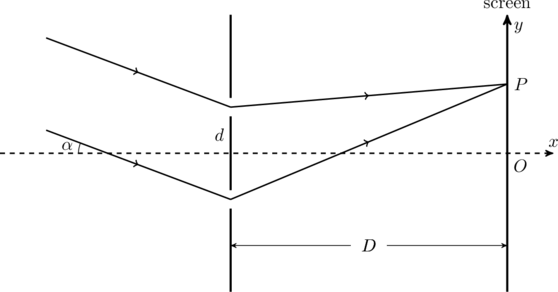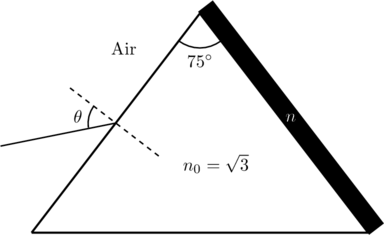JEE Advanced 2019 Paper 2, Question 7
In a Young’s double slit experiment, the slit separation ![]() is 0.3 mm and the screen distance
is 0.3 mm and the screen distance ![]() is 1 m. A parallel beam of light of wavelength 600 nm is incident on the slits at angle
is 1 m. A parallel beam of light of wavelength 600 nm is incident on the slits at angle ![]() as shown in figure. On the screen, the point
as shown in figure. On the screen, the point ![]() is equidistant from the slits and distance
is equidistant from the slits and distance ![]() is 11.0 mm. Which of the following statement(s) is/are correct?
is 11.0 mm. Which of the following statement(s) is/are correct?

- For
 degree, there will be destructive interference at point
degree, there will be destructive interference at point  .
. - For
 , there will be constructive interference at point
, there will be constructive interference at point  .
. - For
 degree, there will be destructive interference at point
degree, there will be destructive interference at point  .
. - Fringe spacing


